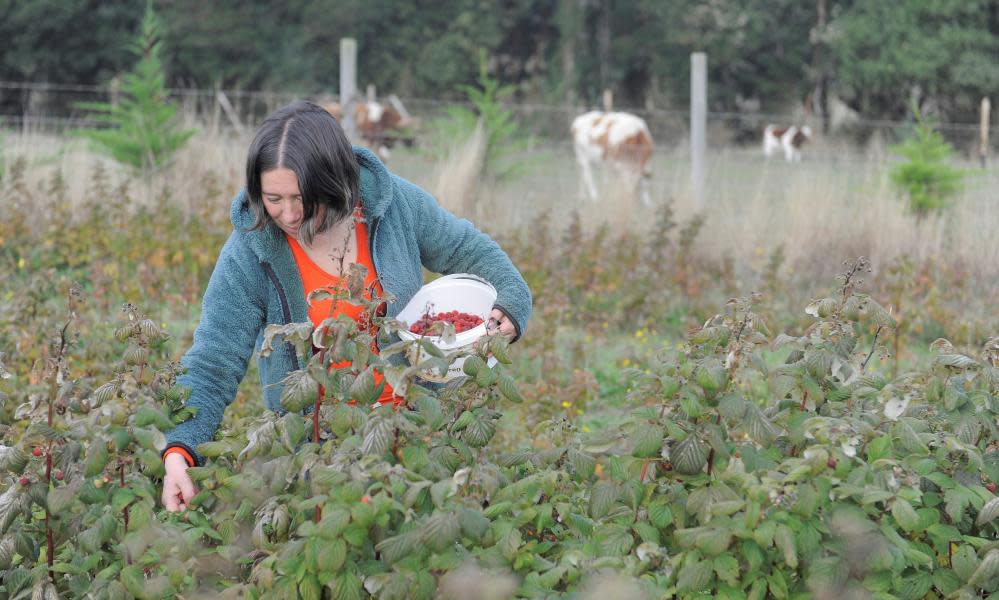Chile’s indigenous communities face new challenges amid pandemic

Away from the grey tower blocks and sprawling suburbs of Chile’s capital, Santiago, the country’s indigenous communities are facing new challenges during the pandemic.
The country’s 10 indigenous groups account for 12.8% of the population, scattered from the southernmost tip of Patagonia to the dry plains of the Atacama Desert in the north, and remote Easter Island in the South Pacific.
But the Chilean government’s response to the pandemic has been criticised as “monocultural”, as calls to stay at home largely overlook the reality of life for indigenous peoples, many of whom live in impoverished rural communities.
“The government said it was well prepared for the pandemic, but these preparations were clearly designed for Euro-descendant urban populations,” said Dr Nelson Vergara, the head of the first nations department at Chile’s medical union.
“Western norms dictate that we live in homes with a small garden or balcony if you’re lucky, but rural life for indigenous people isn’t like that … People cannot simply stay indoors,” he explains.
Four months after Chile confirmed its first coronavirus case, Vergara believes that data pertaining to patients’ indigenous identities is not being collected adequately, making it difficult to ascertain the true extent of the virus’s effect on indigenous communities. The health ministry could not respond immediately to a request for comment.
Although Chile initially reported low numbers of cases and deaths, the country has now confirmed more than 300,000 coronavirus cases and 6,434 deaths according to the government’s official count.
When probable – but unconfirmed – virus deaths are included (in line with World Health Organization recommendations), total deaths have exceeded 10,000.
Forty-five of those confirmed deaths occurred in La Araucanía, the southern province which is home to the majority of the Mapuche population, Chile’s largest indigenous group.
Related: Why the lost kingdom of Patagonia is a live issue for Chile's Mapuche people
Araucanía, was for centuries the setting for the Chilean state’s “pacification” battle against the Mapuche, which has left the territory underdeveloped and impoverished – it is still the country’s poorest region.
The virus first arrived in the region with holidaymakers in the southern hemisphere’s summer months. Its quick spread among local inhabitants was accelerated by cultural customs and close-knit family ties.
“Mapuche communities survive on friendship and solidarity,” said Francisco Yevilao Huaiquillán, a community leader in Lonquimay, a rural province of 11,000 people that was an early focal point of the outbreak.
“Everybody knows one another, and we always greet people with hugs and kisses – but this was one of our biggest problems, as it created the perfect conditions for a virus to spread,” he explained.
The local economy also spluttered as targeted lockdowns limited people’s movement.
In Lonquimay, as in other rural communities in the region, residents usually sell livestock and pine nuts, but traders were cut off from the area by travel restrictions, stifling the community’s income.
Nearly 40% of people in La Araucanía hold down informal employment, and Mapuche women selling vegetables on the streets of Temuco were cleared away violently by police.
Chile’s indigenous people were already struggling. According to a 2017 survey, 30.2% of the indigenous population lived in conditions of multidimensional poverty, an indicator which considers health, education and living standards.
“The Mapuche have very few resources and are among the most vulnerable people in the country,” said Andrés Cuyul, an academic in the Universidad de la Frontera’s public health department. “The same state that has been bringing us illnesses since the 18th century is now the one that is supposedly caring for us.
“But the pandemic response was never designed for indigenous people – what are people in poor rural communities supposed to do with online yoga and cooking classes?”
Although a 2.5bn peso ($3.1m) fund has been created to support Mapuche businesses, the application process is entirely online – and therefore of little use to rural communities where internet access is sporadic and digital skills are acutely lacking.
Related: Conquistadors tumble as indigenous Chileans tear down statues
Local authorities have made a handful of documents available in the Mapuche language, Mapudungun, but little else has been done to convey the message to other indigenous populations.
“The people in these areas don’t understand the authorities, and the issue goes far beyond language and literacy,” said Vergara.
“A policy that works in Santiago won’t be interpreted in the same way by an indigenous person in the countryside.”
As literacy rates and orthography differ between Mapuche communities, Vergara and his department have distributed audio recordings in Mapudungun with safety and hygiene instructions.
“We are glad that this is finally being talked about, but it should have happened months ago,” he said. “They can’t only just be realising that one in 10 Chileans identifies as indigenous.”

 Yahoo News
Yahoo News 
